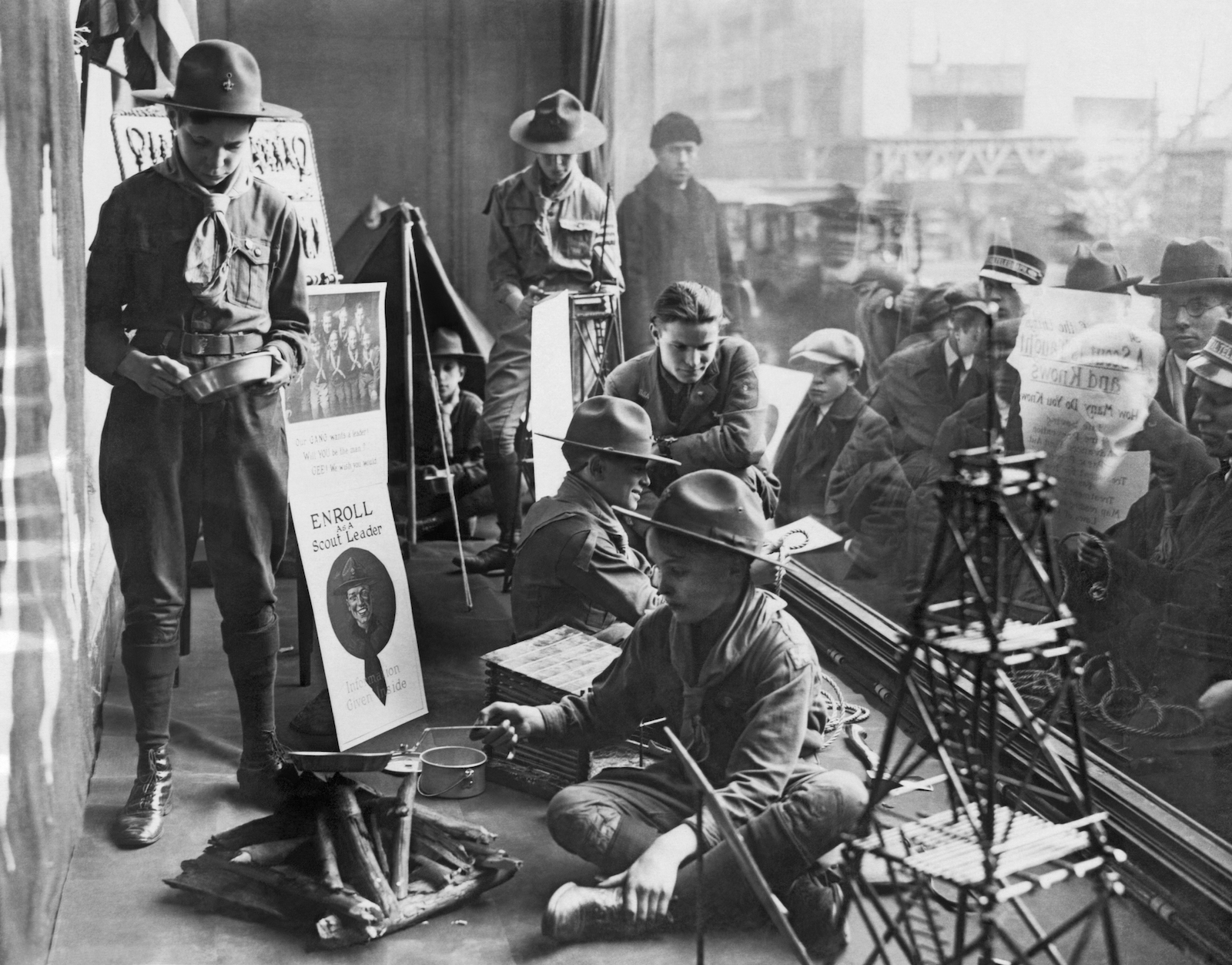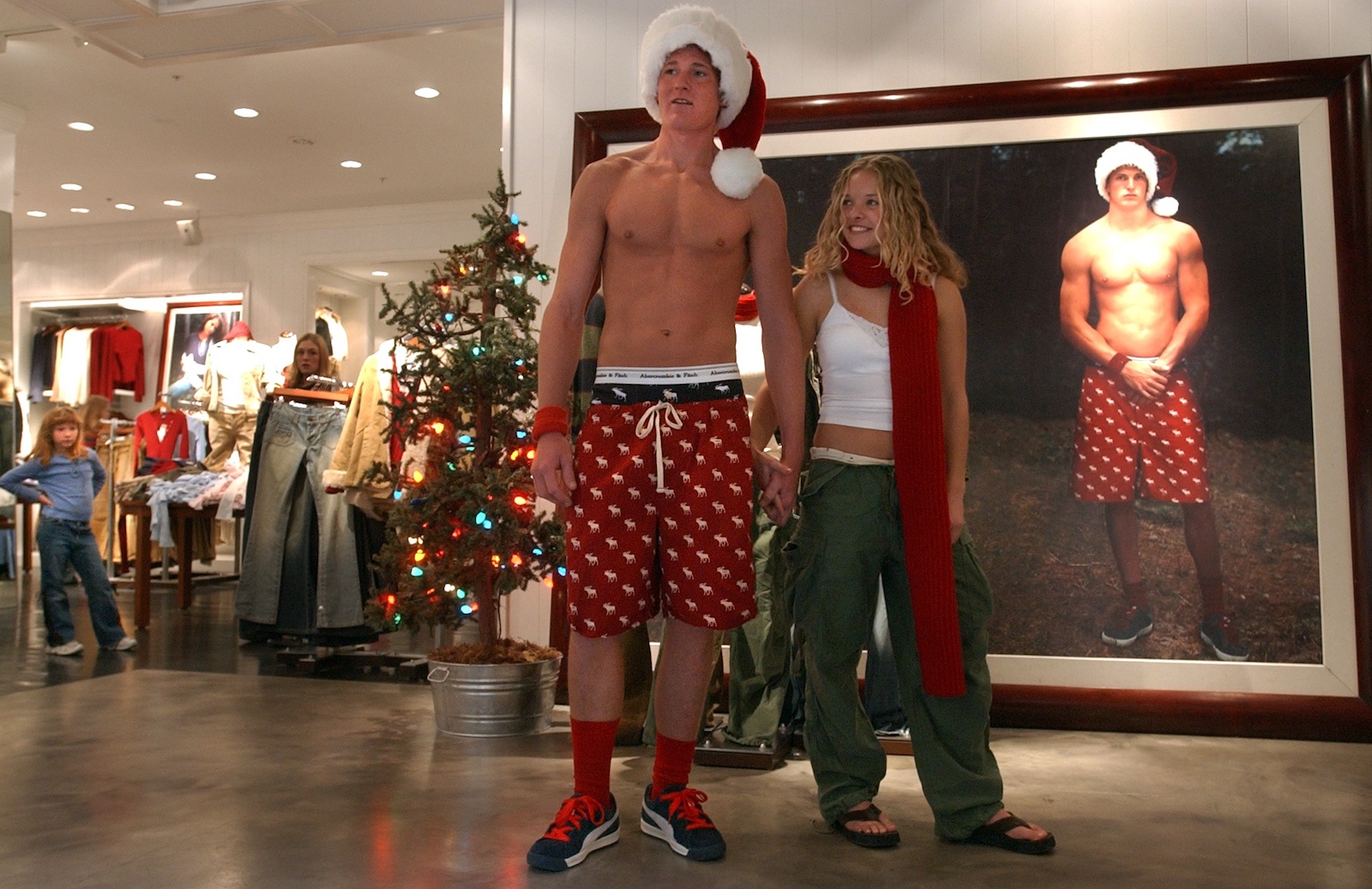In 2022 hindsight, it is easy to pin a lot of societal ills on Abercrombie & Fitch. Anyone who made the questionable decision to wander across the threshold of one of the clothing brand’s cavernous mall outposts at any point in the past 25 years probably remembers the experience as a mix of fever dream and frat party: hundreds of identically distressed jeans, pulsing house music, dizzying clouds of cologne, abdominal muscles as shiny and delineated as buttered corn kernels.
Did the now-embattled retailer define prep-school dystopia, or was it the other way around? This is more or less the driving question of the new Netflix documentary White Hot, which covers the precipitous rise and swift fall of the clothing empire under eccentric CEO Mike Jeffries. Director Alison Klayman lays out the narrative that Abercrombie & Fitch achieved the pinnacle of its success by exploiting the most unsavory symptoms of heady turn-of-the-millennium materialism: white supremacy, body dysmorphia, the expectation that you should pay $60 for a T-shirt the size of handkerchief.
But its lasting role in the dark history of consumerism didn’t begin in the TRL era. In White Hot, the veteran fashion editor Robin Givhan offers the insight that Abercrombie & Fitch’s business strategy — like so many other fashion brands — comes down to, “Don’t give people what they’re asking for, but make them ask for what you’re offering.” And what Abercrombie & Fitch has consistently offered since 1892 is the idea that if you wanted to be part of the American leisure class, you had to have the right wardrobe.
At the beginning of the 20th century, Abercrombie & Fitch trafficked not in cropped hoodies, but expensive outdoors gear for the East Coast elite. Its 12-story building in midtown Manhattan was intended as a brick-and-mortar-bound Walden Pond for shoppers, where one could peruse rifles and fishing rods and get fitted for hiking outfits in “a green respite from the bustle of city life.” There was even a log cabin complete with fishing pond on the building’s roof, where customers could test out new gear or debate the virtues of hunting beavers freely. (The latter sounds like a euphemism that could have appeared on an A&F T-shirt circa 2006, but it actually happened during a 1923 meeting of the Adirondack Club.)

To the casual observer, that’s quite a brand turnaround. But that first flagship Abercrombie and Fitch store, says the historian Rachel Gross at University of Colorado Denver, was a defining element of the brand’s legacy as an outdoors outfitter. That is, in her words, as “one of the most important companies for shaping this notion in the U.S. that to get back to nature, Americans needed to go shopping first.”
The brand has profited — significantly, in its older-millennial heyday — from a singular definition of the “all-American” aspiration, one full of lake houses and long legs. In the ‘90s and aughts, the brand’s infamous advertising campaign — shot by the now-disgraced photographer Bruce Weber — was centered around physically flawless, predominantly white models in varying states of undress frolicking sexily through forests and fields. It’s pure capital-R Romantic fantasy, very Cruel Intentions-meets-Thomas Cole, but with a meticulously engineered look. If you’re going to play your guitar and weep under the trees, you need hip-hugger jeans and a studded belt. Don’t even think about sunning on the dock with your shirtless friends unless every single one of you is in cuffed cargo khakis.

According to Gross, even at its start, the Abercrombie & Fitch empire was built on the claim that there was a correct aesthetic that one needed to have in order to spend time in nature – one made up of nothing but Abercrombie & Fitch products. If you wanted to be a true outdoorsman, you had better show up to the trail with the Abercrombie & Fitch tent, the Abercrombie & Fitch blanket, Abercrombie & Fitch woolen breeches and hunting jacket. And for the true expeditioner, price should never be an object.
Gross’ research has focused on how this exact marketing strategy paved the way for the outdoors industry of today. Even Abercrombie & Fitch’s first Manhattan store predicated an industry standard where, ironically enough, “the idea of experiencing nature indoors — go shopping, and let that be your nature experience — is a central part of the American outdoor consumer experience.” You wander along a landscaped wooded trail alongside a burbling waterfall to enter the flagship REI store in Seattle, for example; Cabela’s is famous for elaborate, life-size wildlife dioramas that wouldn’t be out of place in a natural history museum. And then you buy $500 worth of accessories to go walk in the woods.
Which brings us to another key irony to the Abercrombie & Fitch story. The brand started out exclusively marketing to an urban cohort with a lot of money — which, in the early 20th century, surely included a great number of men who had built their fortunes through one intensely polluting industry or another. (David Abercrombie himself started his career as a surveyor for Norfolk & Western Railroad Company in West Virginia’s coal and timber country.) The fact that the enjoyment of wild landscapes was sold as the exclusive recreational purview of the class that was enriched by ruining it is a bit too familiar here in the 21st century.
While the Abercrombie & Fitch of my teen years — and I assume the one of today, although it’s been well over a decade since I darkened the door of thatone of those establishments — bears little resemblance to the preferred retailer of Teddy Roosevelt, that ethos has remained consistent through the company’s 130-year history. There’s a very particular look you need to thrive in the wild, be it the halls of high school or the woods of Yosemite, and we’re the only ones who can sell it to you. And it will mark you as one of a rarefied class.
Aspirational advertising was hardly invented by Ezra Fitch or Mike Jeffries or any CEO in between. But it might be the only piece of Abercrombie & Fitch’s dubious legacy that is truly, indisputably “all-American.”



